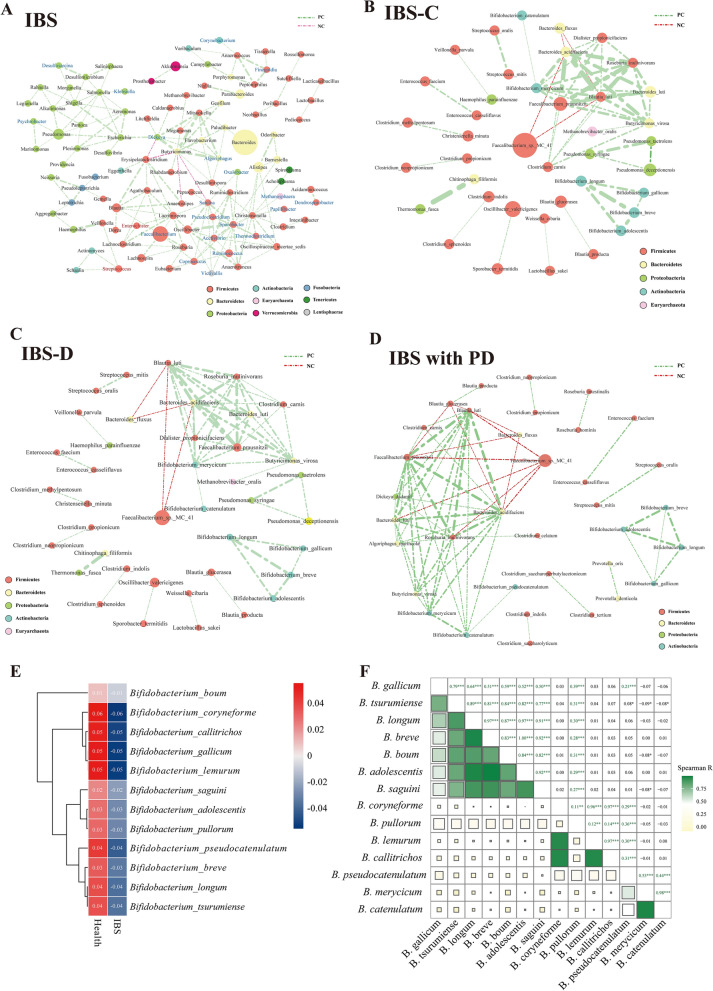Fig. 6.
Co-occurrence network visualization of the microbial interactions in the IBS individuals. A: Co-occurrence network of microbes at the genera level. B–D: Co-occurrence network of microbes at the species level in IBS-C patients (B), IBS-D patients (C) and IBS with psychiatric disorders (D). The lines connecting nodes (edges) represent a positive (light green) or negative (red) co-occurrence relationship. The color of each dot represents the different taxonomic affiliations of the species (phylum level), the width of the edges reflects the absolute value of correlation coefficients. The size corresponds to their relative abundance. E: Heatmap visualization of the mean relative abundance of 12 significantly changed species belonging to the genera Bifidobacterium in IBS and healthy controls. Two columns represent the IBS and control, respectively. Each row represents one species of Bifidobacterium. Values were normalized by Z-scores. The color scale was set with red for relative high abundance (Z-scores > 0) and blue for the low ones (Z-scores < 0). The more weights of the absolute Z-scored-transformed abundance values, the deeper color of the squares. F: Heatmap matrix plot of Spearman's correlation coefficients (ρ) among different Bifidobacterium species. The absolute value of ρ is indicated by a color code explained in the legend. The green color indicates a positive correlation, whereas brown represents a negative one. The scale of a square is proportional to ρ2. Cells above the matrix diagonal refer to specific ρ values and their statistical significance (p-value). Significance levels p < 0.05, p < 0.01 and p < 0.001 are indicated by *, ** and ***, respectively, whereas p > 0.05 is presented p explicitly

